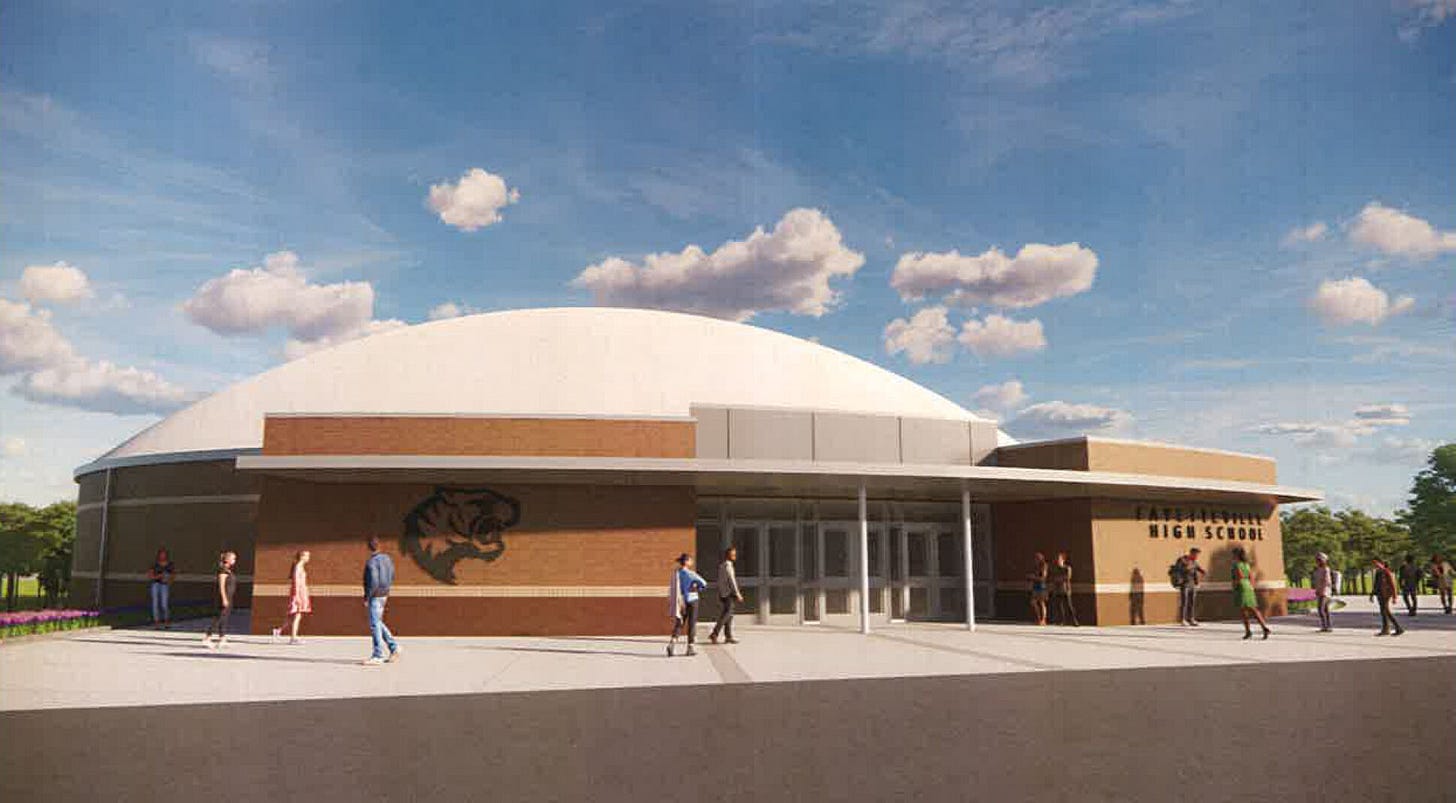Commissioners hear report on proposed storm shelter at Scott High
Preliminary work continues towards FEMA-funded shelter that would double as gymnasium
HUNTSVILLE | A storm shelter/gymnasium at Scott High School is still a ways off but moving forward, members of County Commission learned Monday evening.
Near the end of Monday’s monthly commission workshop, representatives of firms involved in Scott High’s pursuit of a storm shelter gave a presentation on the steps that effort might involve. According to 3rd District school board member Chris Shelton, who championed the pursuit of the storm shelter, the school system has completed the pre-application process, but still has “a ways to go” before seeking an architecture and engineering firm to draw up plans.
The county is seeking FEMA grant funding to build a storm shelter that would double as a competition-size gymnasium. Traditionally FEMA funding covers 75% of the cost of such shelters, though the Scott County School System believes it can receive up to 95% funding for its planned shelter through a combination of funding from FEMA and its state-level counterpart, TEMA.
If Scott County’s plans for a shelter are approved, it would become just the second such storm shelter in Tennessee. The first, in Shelton’s native hometown of Fayetteville, was just approved and is nearing the construction phase.
“Six companies bid on Fayetteville,” Shelton told commissioners Monday. “That was more than they anticipated. I think that bodes well for us when we get to that point.”
As drawn up, Scott County’s proposal would be for a dome-shaped structure that would be designed to withstand winds up to 250 mph. The structure would be built in the low-lying area just north of the school’s library pod, with a second-story entrance and a first-story gymnasium. The structure would be open for community shelter in times of severe weather, and would otherwise be used for school-related functions.
Presenting at Monday’s commission meeting were Brandon Bishop of JBMH Architecture and Gregg Kennedy of Broaddus & Associates. Bishop’s firm has designed storm shelters in Louisiana, Mississippi and Alabama, as well as the Fayetteville shelter. Kennedy is a former mayor of Smithville, Miss., a town that was destroyed by an EF5 tornado during the April 2011 outbreak. That storm killed 16 people, and Kennedy’s town later constructed Mississippi’s first FEMA storm shelter. There are now 30 such shelters across the state.
“I know the destruction and the loss of life,” Kennedy said.
One thing Bishop pointed out is that while FEMA funding will cover the bulk of the cost, it will only cover things directly related to the storm shelter — meaning the structure itself. It won’t cover items such as a hardwood floor for sports, goals, scoreboard, bleachers or any other accessories, nor will it cover extras to the building itself, such as a lobby or foyer entrance.
Kennedy explained that FEMA’s grant funding allows five square feet for every person who lives, works or goes to school within a half-mile radius of Scott High — designed to account for anyone who can walk or drive to the shelter in five minutes or less if severe weather strikes. Based on the numbers, he said, Scott High’s shelter would be about 20,000 square feet. He added that the current average construction cost is $486 per square foot.
The shelter would be designed for two-hour occupancy, meaning it’s intended for community members to ride out severe weather and not for overnight shelter.
Kennedy also said that it would be a minimum of 21 months before Scott High’s shelter could become a reality, once FEMA funding is approved. That includes three to four months for the design phase and 12 to 16 months for construction.
“These are not things that happen quickly,” he said. “Everyone moves as quickly as possible but you have to complete the proper steps.”



